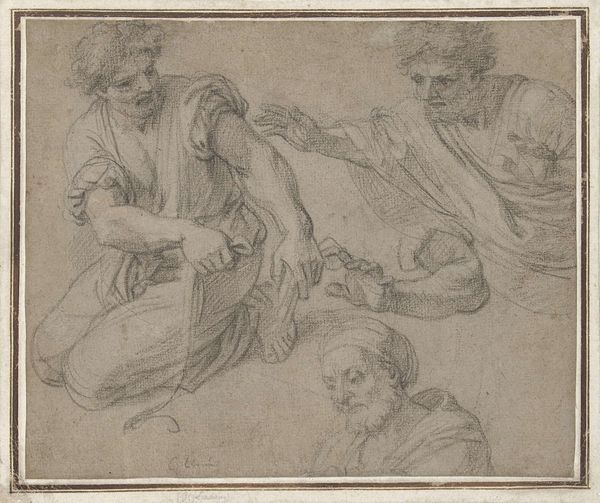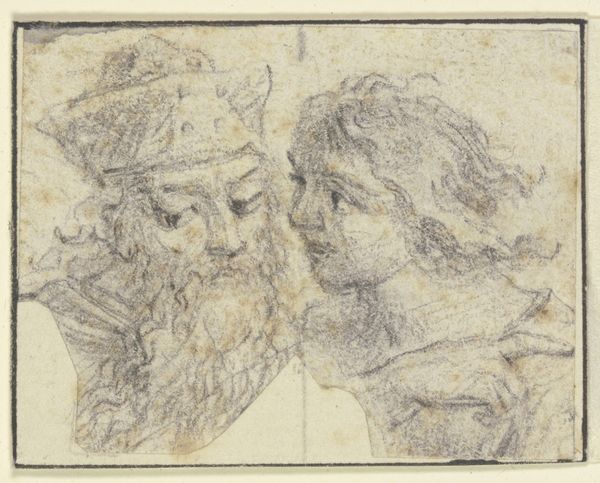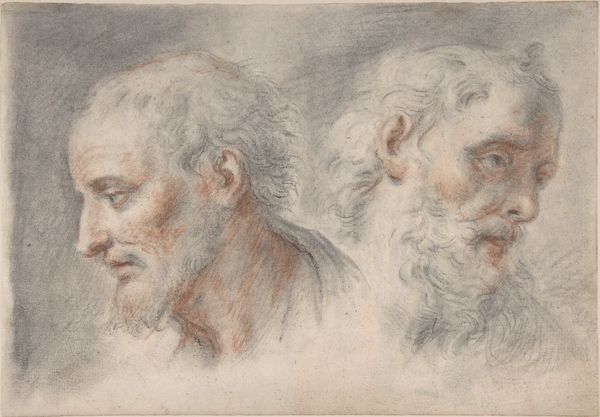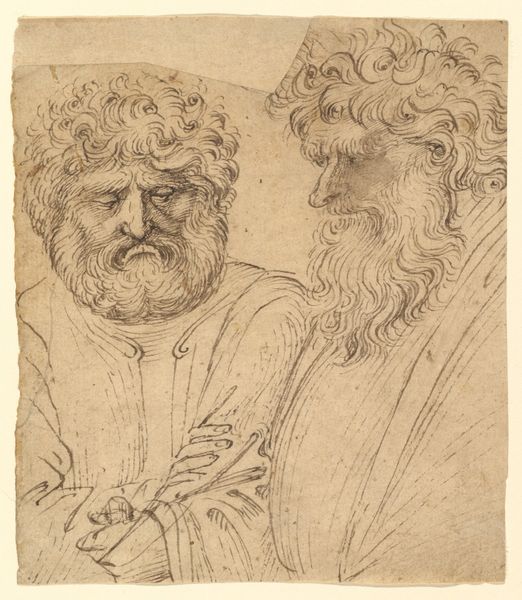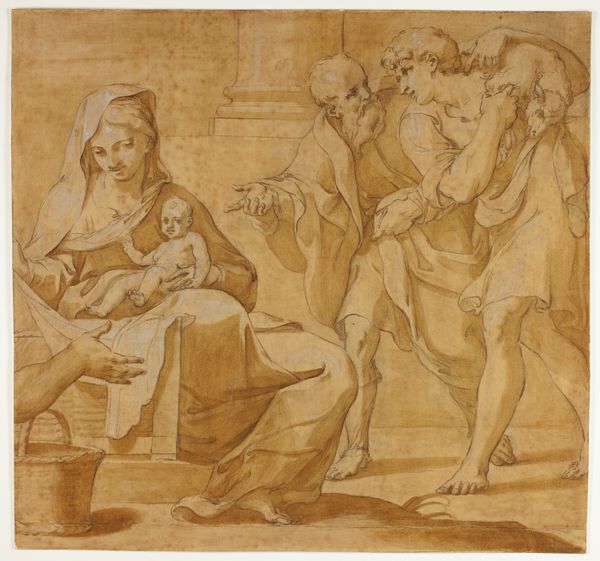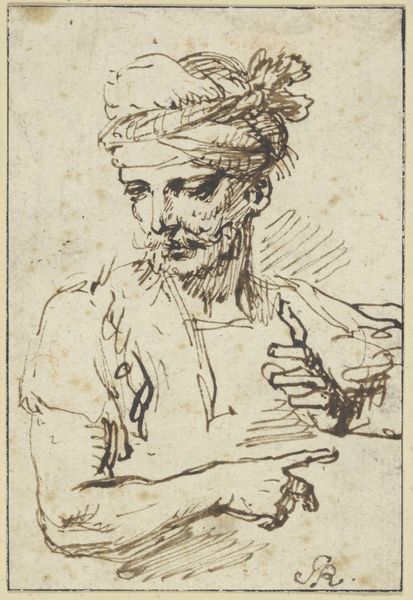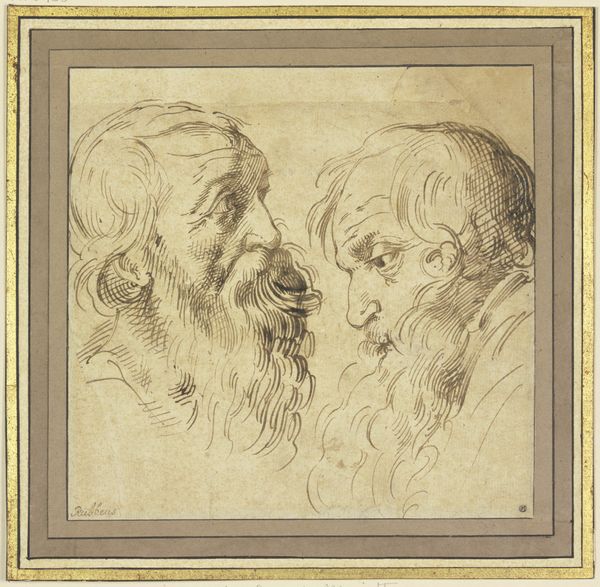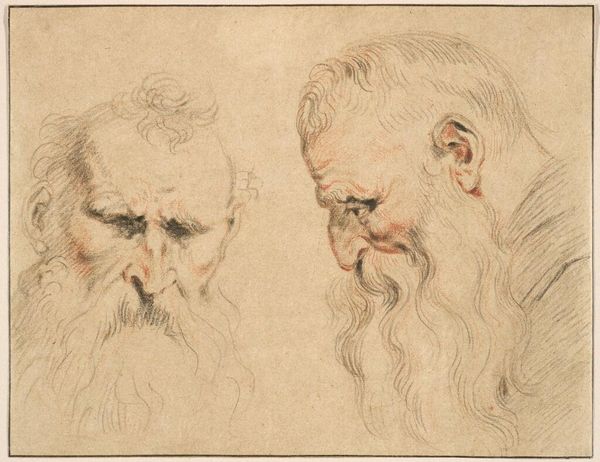
drawing, ink, pen
#
portrait
#
drawing
#
baroque
#
pencil sketch
#
ink
#
pen-ink sketch
#
pen
#
portrait drawing
#
watercolour illustration
Dimensions: height 125 mm, width 201 mm
Copyright: Rijks Museum: Open Domain
Curator: The directness in these figures is really striking, wouldn’t you agree? The artist truly captures something intense in their expressions. Editor: I’d say it feels immediate, the textures jump right out. Given that Jan Moninckx crafted this using pen and ink, it’s amazing how tactile it feels, like I could almost feel the fibers of their garments, the strands of their beards. Curator: It’s so interesting you pick up on the texture right away, as this drawing, entitled “Twee hoofden van Oosterlingen,” which translates to “Two Heads of Orientals,” created during the 17th century, presents a complex intersection of portraiture and cultural representation. Given the title and period, it invites questions about European perceptions and portrayals of people from the East. What histories and biases are embedded in this artistic gaze? Editor: Precisely. The use of pen and ink—easily transportable materials—speaks to the artist's process of observation and documentation. Were these portraits commissioned, or were they studies made in passing, perhaps reflecting a colonial encounter? Curator: The faces themselves, particularly the distinct features and attire, position the figures in a cultural context that would have been exoticized by a European audience. There's a certain power dynamic implied in how these "oriental" figures are presented for Western consumption, right? What do their expressions convey, beyond just individual character? Editor: It is interesting how the medium of ink helps give it a bit of realism but perhaps because the subjects look a little rough around the edges gives it that sketch look. I also wonder about the source of the ink: Was it locally sourced, or acquired through trade routes that shaped the same colonial narratives you’re outlining? Curator: The composition directs us, too. These figures are positioned as objects of study, reducing their identities to observable traits. This is part of a larger historical trend of objectifying non-European peoples within scientific and artistic frameworks. What power dynamics were involved in deciding how they would be represented? Editor: By tracing the very composition of the ink and its source we reveal material evidence of production and cultural exchange inherent to Moninckx's practice, expanding our understanding of the artist's practice in its broader context. Curator: Right. Reflecting on the artistic process helps to illuminate not only the historical representation but also the artist’s participation within specific social frameworks and historical inequities. Editor: Definitely. And focusing on Moninckx’s approach to materiality broadens our perspective on these very figures and, importantly, opens up conversations about how images shape histories, influence production and reflect how societies treat one another.
Comments
No comments
Be the first to comment and join the conversation on the ultimate creative platform.



